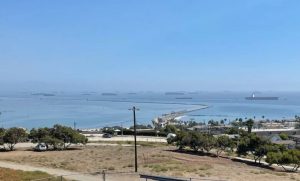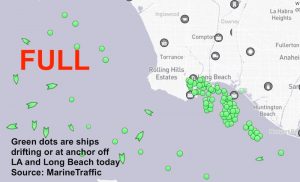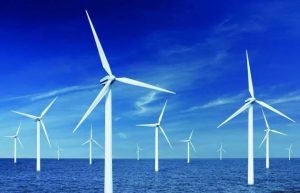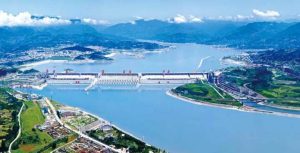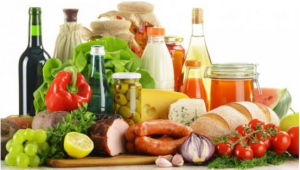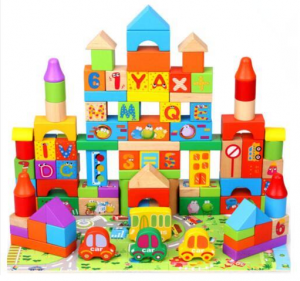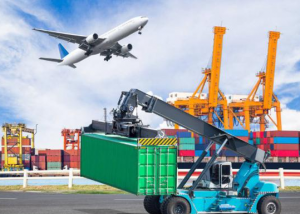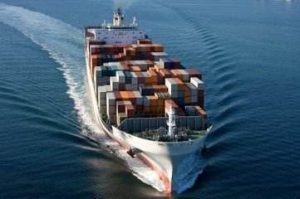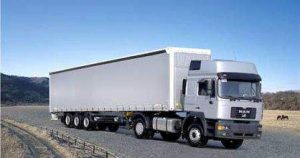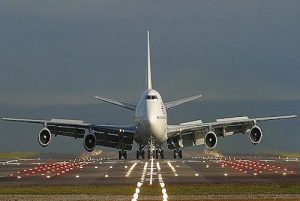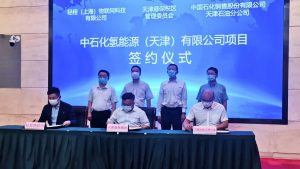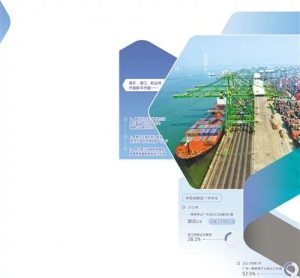
Data showed that From January to July, China’s foreign trade continued to maintain a momentum of rapid growth. However, the situation of foreign trade enterprises is a little sad. Recently, shipping prices continue to rise, some popular lines container freight has exceeded $20,000 per teU, reflecting the spot market price of Shanghai export container freight index has been new highs. Export container “a box is difficult to obtain”, some enterprises even fall into the “box is more expensive than the goods”, “there is a single dare not meet, export is not profitable” predicament. Why is it difficult to “ship” by sea? How to rescue foreign trade enterprises? The reporter conducted the investigation in guangdong province, a major foreign trade province.
Large quayside bridge equipment at the front of the wharf keeps lifting and transporting containers, trailers in the yard shuttle back and forth constantly… The busy scene on the ports of Dongguan Port Group is a microcosm of the flourishing export of “Made in Guangdong”. According to the statistics of Guangdong Branch of Customs, up to July, Guangdong’s foreign trade import and export has been growing for 9 consecutive months; In the first seven months of this year, Guangdong’s container exports increased 4.6 times.
However, strong international demand combined with the impact of the COVID-19 epidemic overseas has continued to “obstruct” shipping logistics, with freight rates rising.
“Since the fourth quarter of last year, there has been a shortage of containers and a shortage of space in south China as exports have boomed. In the first half of this year, due to the Suez Canal congestion and other factors, the European and American route hub ports continued to be closed, and the international container shipping market is more obvious.” Zhuang Zhiyong, deputy general manager of South China CoSCO Container Shipping Co., LTD. (South China Container Shipping) Dongguan Branch, analyzed that the contradiction between supply and demand is on the one hand due to the epidemic, European and American consumers have increased demand for “Made in Guangdong” furniture, electrical appliances and other products, and cross-border e-commerce sales have surged; On the other hand, the spread of the epidemic has significantly reduced the efficiency of many ports, yards and trailers around the world, resulting in port congestion and impeded container turnover.
The reporter learned from several foreign trade enterprises that the “obstruction” transmitted from overseas and the occasional outbreak of the epidemic in China have caused problems in many ports in the Guangdong-Hong Kong-Macao Greater Bay Area in the past few months, such as cargo pressure, ship jumping port, difficult to pick up and return containers, and small and medium-sized enterprises are suffering from “shipping difficulties” and high costs.
Most affected are processing trade companies, which rely heavily on seaborne exports. “A headache! Orders received by the overseas headquarters keep coming, 1/3 of our printers and copiers can not be shipped out, and we have accumulated more than 100 containers in the past two months.” Yuan Xiji, head of customs affairs of Kyocera Office Equipment Technology (Dongguan) Co., LTD., told reporters that because the dock yards in Yantian and Shekou of Shenzhen have long been filled with containers, there are also long queues outside the dock. It used to take only a week for goods to leave the factory and ship, but now it takes nearly a month. After arriving at European and American ports, customers used to wait three or four days to pick up goods. Now they have to wait weeks.
Facing the backlog of goods, the dilemma of processing trade enterprises lies in that they can only produce according to the order when they receive orders from overseas headquarters. “If we are marketing ourselves, we can temporarily stop or reduce production, but we have to do it when we receive orders. We can’t stop.” To cope, Mr. Yuan said, the company had to choose the more expensive China-Europe freight train, which is also difficult to book and can only handle one-tenth of the original sea freight volume. For a few urgent customer needs, expensive air freight has to be used instead. “Shipping costs are the customer’s burden, but it will eventually affect sales.”
Electrical and mechanical products account for nearly 70 percent of Guangdong’s exports, and manufacturers’ overseas orders are booming, but their profits are being eroded by high freight costs. “The cost of shipping logistics has soared.” Liu Qizhen, a customs manager at Dongguan Chuang Electromechanical Products co., said 70% of the company’s exported power tools go to the U.S. and orders rose 30% in the first half. However, due to the lack of containers, only 80% of the products can enter the dock now. Those who cannot enter the dock have to spend one or two million yuan to rent a warehouse to wait for the containers every month. When goods go to Yantian Wharf in Shenzhen, the cost of land transportation has increased by 30% or 40%. Shipping has risen even more. A 40-foot container shipped to the United States used to cost just over $2,000, but now it costs more than $10,000. We bear the bulk of the freight, fortunately, the product added value is high, not to “more expensive than the goods” situation.
Small and medium-sized companies are feeling the chill of life and death. Shipping industry insiders told reporters that in the “one cabin is hard to find” environment, large enterprises have resources from shipping companies to get relatively more space, there are funds to withstand the rise in freight rates, and small and medium-sized enterprises often give shipping agents, or can not get space, or have to bear higher freight rates. South China Transport recently survey small and medium-sized enterprises found that some enterprises because of the backlog of warehouses, delivery delays, funds can not be withdrawn, has faced the risk of production.
In order to alleviate the difficulties of enterprises, guangdong customs, port, shipping and other departments and enterprises have worked together since this year to take precise measures against the blocking points in all links of the whole maritime transportation chain, flexibly innovate models, open up green channels, and try their best to ease the adverse impact of the international maritime logistics difficulties on enterprises’ export.
Overstocking is an imminent problem for foreign trade enterprises, so the Customs department launched the “factory warehouse” business for processing trade enterprises.
“In recent years, the phenomenon of ‘bursting’ and ‘dumping’ of shipping exports has occurred from time to time, and the waiting time has been significantly prolonged, while the inventory capacity of enterprises is limited, and many processing trade enterprises can not meet the demand of the original customs records. At this time, they can apply for ‘factory external warehouses’, adding external warehouses to store goods. As long as the application is submitted online, the customs will immediately approve it.” Huangpu Customs belongs to dongguan Customs comprehensive business three section chief Yue Xinyan said. “Thanks to dongguan Customs, kyocera set up several off-factory warehouses for us, storing more than 100 teUs of goods, which greatly relieved the inventory pressure.” Yuan Xiji told reporters.
The difficulty in booking cargo space for exports is the biggest headache. Ports and customs departments have joined hands to support the “sea-going” chartering of cargo vessels in the Greater Bay Area.
Recently, Dongguan port officially opened a charter route between Europe and America, opening the channel for dongguan foreign trade enterprises to fly directly to Europe and America. “With the support of Shatin Customs under Huangpu Customs, we have introduced charter routes to Europe and America, which can deliver nearly 10,000 TEUs of goods every month.” Dongguan Port group related business director Sun Cheng introduced. Compared with the enterprise feeding the goods to the surrounding hub ports through Dongguan port, the European and American charter routes can save us $3000 / box of shipping costs, and alleviate the shortage of shipping space. “Shatian Customs provides round-the-clock customs clearance service for us, and deals with ship customs clearance, health quarantine and other procedures in the first time, saving nearly a week and 1,500 DOLLARS per container.” Guangzhou city shipping agent company dongguan branch manager Zeng Junhai said.
Port congestion, but also export enterprises into the trailer to carry cabinets difficult, land freight soaring predicament. Since June, Dongguan Port, Nansha Port of Guangzhou, Shekou Port of Shenzhen and Yantian Port have jointly launched the barge express service. Barges are used to replace the original trailer to pick up and return containers, so as to reduce logistics costs and ensure that containers can catch up with larger ships. At present, the service has effectively guaranteed the normal operation of the supply chain of Huawei, TCL, VTECH and many other foreign trade enterprises.
For smes in urgent need of timely help, CoSCO shipping Group and its subordinate South China Container Shipping Co., Ltd. play the role of central enterprises and take precise measures for small and medium-sized customer groups. “The company has developed a space supply scheme for international container lines, making plans in advance for small and medium-sized customers and locking space. We have successively launched ‘us line small and medium customer service line’, ‘Europe line small and medium customer special class’, ‘Australia and New Zealand quality Express special class’ and other ‘one-stop’ trailer and shipping services, and created a new small and medium customer e-commerce special line. Zhuang Zhiyong introduced.
It is still difficult to predict when international shipping will return to normal, and foreign trade enterprises are still struggling to find good solutions to the challenges.
In this regard, South China Container Shipping suggested that enterprises should strengthen the overall planning of production and logistics, pay attention to the real-time dynamics of the maritime market, adjust the production rhythm according to the shipping space situation, and reduce the inventory backlog as much as possible. At the same time, keep close communication with shipping company, timely solve the problems encountered in shipping.
Industry insiders suggested that traditional foreign trade enterprises should timely consider making new plans for future development, as shipping cost pressure will not be eased in the short term. For example, a considerable part of the sea transportation belongs to processing enterprises, no pricing power, logistics power, can not control the production and delivery cycle. At present, traditional offline supply chain logistics is relatively depressed. If we can try to create our own brand and set up shop on Amazon and other cross-border e-commerce platforms, we can control supply chain logistics more flexibly.
Foreign trade enterprises with independent brands and channels show obvious advantages compared with traditional processing trade enterprises. It has a number of its own brands, a small number of OEM dongguan chuangji felt deeply. “OEM for overseas brands can only get a little processing fee, under the pressure of cost, can only manage to maintain production, after all, a loss of 1 yuan is better than a loss of 10 yuan. But private label has more profit margin, make some money, at least not lose money.” Liu said.
Since the outbreak of the epidemic last year, more and more foreign trade enterprises have actively tried to transform. With their efforts to enhance independent development capacity and expand living space, Guangdong’s foreign trade risk resistance and resilience are gradually improving. In 2020, general trade accounted for more than half of guangdong’s total import and export value for the first time, occupying the dominant position; Processing trade fell to 28.2 per cent. In the first seven months of this year, Guangdong’s general trade has accounted for 52.5% of its total import and export value, further optimizing its foreign trade structure.
Industry experts believe that the current vigorous development of new forms of foreign trade represented by cross-border e-commerce provides new opportunities for foreign trade enterprises. The majority of foreign trade enterprises should seize the opportunity, practice “internal skills”, through actively expanding brand and sales channels, enhancing research and development ability, enhance the level of automation and other measures, reduce costs, improve the added value of products, enhance the ability to withstand the international market storm.
